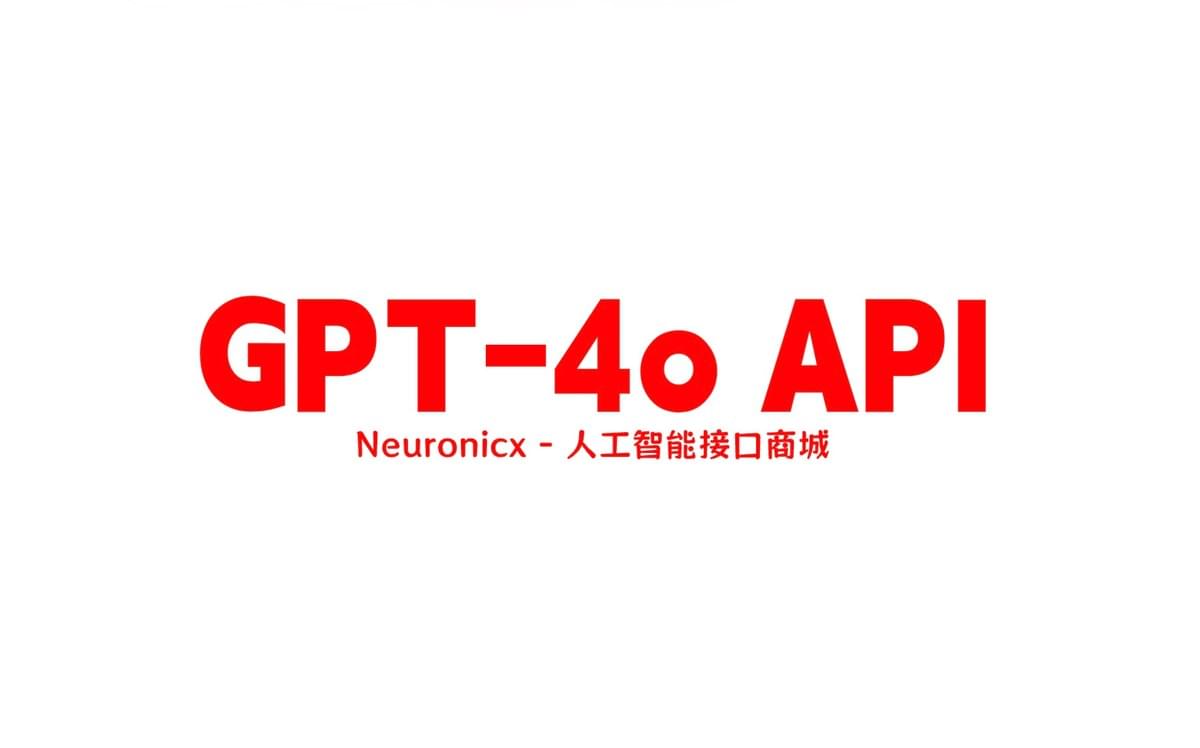GPT-4 API 概述
最新的GPT-4 API 包括幾個不同的版本,以滿足多種應用場景:
- 特點:GPT-4 Turbo 提供了增強的效能,擁有128k 上下文窗口,可以支援一次生成或對話內容相當於300 頁文字。與原版GPT-4 相比,其輸入token 費用降低了三倍,輸出token 費用降低了兩倍。其高效的處理能力和大上下文視窗使其適用於需要長時間對話和複雜內容生成的應用場景,例如客戶服務、內容創作和大型專案管理工具。
- 使用:開發者可以透過Chat Completions API 使用此模型,指定模型名稱為gpt-4-turbo。它非常適合需要更大上下文或在更低成本下獲得更高效能的用戶。此外,由於其高效性和成本效益,GPT-4 Turbo 也廣泛應用於需要大規模內容生成的線上教育和商業行銷等情境。
- 特點:該模型提供了圖像到文字的功能,以gpt-4-turbo 的形式實現,使其非常適用於基於視覺的應用。它允許開發者整合圖像分析和基於視覺輸入的響應能力。 GPT-4 Vision 不僅可以處理靜態影像,還能夠識別影像中的細節並產生準確的描述,這在醫療影像、自動駕駛和智慧監控等領域有廣泛的應用前景。
- 存取:Vision API 向所有擁有GPT-4 存取權限的開發者開放,詳細的使用說明可以在OpenAI 的幫助中心找到。開發者可以利用此API 創建能夠理解視覺內容的應用,例如照片辨識、影像搜尋和即時視覺分析,從而增強其應用的互動性和智慧性。
- 特点:实时 API 集成了音频处理功能,允许开发者构建自然的会话体验。它可以流式传输音频输入和输出,支持实时语音交互、中断处理以及增强的语音模式。该模型适用于客户服务代理、语言学习工具和其他需要实时交互的场景。此外,GPT-4o 实时 API 还支持情感识别和语音调节,使语音交互更加生动自然,极大地提升用户的互动体验。
- 费用:实时 API 的音频处理费用为每分钟音频输入 $0.06,每分钟音频输出 $0.24,是需要实时语音交互的应用的理想选择。其高性价比使其成为企业开发语音助手和实时翻译应用的重要工具,特别是在多语言支持和客户体验方面具有显著优势。
- GPT-4o 模型:
- 特點:GPT-4o 是OpenAI 新推出的旗艦模型之一,支援文字輸入和輸出,未來計劃增加對音訊和視訊等多模態的支援。它同樣具備128k 的上下文窗口,適用於對上下文有高要求的場景,如需要長期資訊記憶和上下文連續性的任務。 GPT-4o 可用於對話生成、內容撰寫和跨模態應用,尤其在結合文字和影片的生成任務中展現了出色的能力。
- 使用:目前GPT-4o 尚不支援音訊功能,不過未來幾週內將向部分受信任的測試人員開放。未來的多模態支援將使其能夠在視覺、聽覺等多方面與使用者互動,從而大大擴展AI 的應用場景,包括智慧客服、虛擬助理以及複雜的內容創作工具。
- OpenAI o1 模型:
- 特點:OpenAI o1 模型是一款面向開發者的高效能模型,能夠處理複雜的文字生成任務。該模型結合了多模態處理能力,包括文字、圖像和視訊等輸入與輸出。與GPT-4o 相比,OpenAI o1 擁有更快的反應速度和更強的處理能力,適用於需要高效內容產生的應用情境。 OpenAI o1 在內容創作、資料分析、程式輔助等領域表現出色,特別適合需要快速回應和高品質輸出的場景。其高效性和靈活性使得它成為開發者創建互動性應用和自動化流程的理想選擇。
Neuronicx 是一個提供多種AI 介面的人工智慧API 平台。對於香港用戶,由於地區限制,無法直接充值和使用部分服務,但在Neuronicx 平台上可以一站式解決這些問題,確保用戶能夠順利存取和使用所需的API,包括GPT-4 這樣的模型介面。以下是購買和使用這些API 的步驟:
- 註冊並登入:首先在Neuronicx.com搜尋平台上的各類AI 介面。
- 瀏覽並選擇API :登入後,可以瀏覽可用的API,例如GPT-4,並選擇符合自己需求的API。 Neuronicx 提供詳細的API 說明文檔,幫助使用者了解每種API 的功能和使用方法。您可以根據自己的專案需求選擇最合適的接口,平台上的分類也有助於快速找到所需功能。
- 購買:選擇API 後購買,付款方式通常為平台支援的支付手段,包括信用卡、電子錢包等。用戶可以根據需要購買不同的配額或套餐,平台支援按需支付和大量購買,從而滿足不同用戶的需求。在購買過程中,平台會清楚顯示所有費用和服務條款,確保使用者的知情權。
- 存取和使用:API 購買成功後,平台會提供存取憑證,可用於將API 整合到您的應用程式或工作流程中。購買成功後,您將收到一組金鑰和文檔,幫助您快速開始整合API。 Neuronicx 提供的API 文件詳細說明如何進行呼叫和集成,並且有範例程式碼供參考,確保開發者可以輕鬆上手。
如果需要更多購買或整合API 的協助,Neuronicx.com 提供了全面的文件和客戶支援。平台還提供線上幫助和客戶服務,用戶可以在遇到問題時隨時獲得支援。此外,Neuronicx 也為企業用戶提供客製化解決方案,確保滿足大規模應用的需求。

